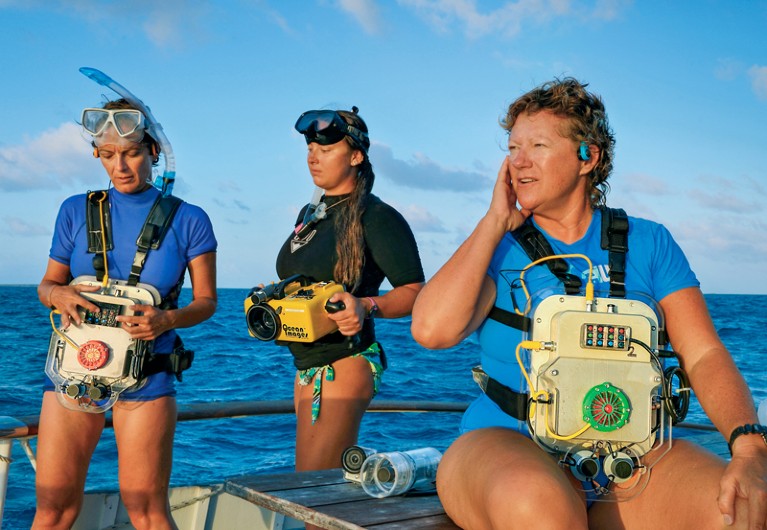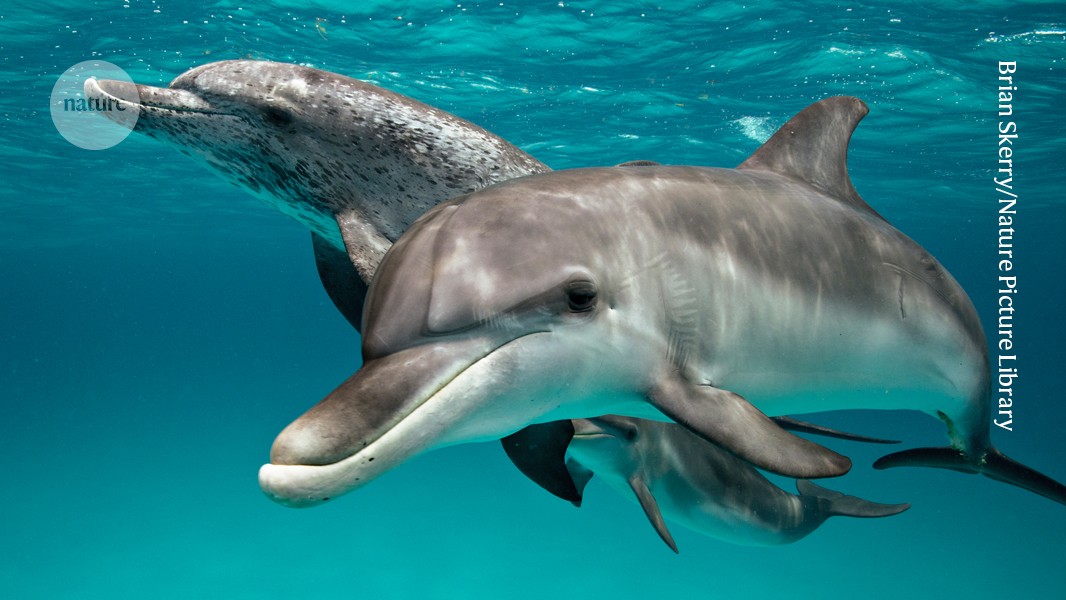Is Anyone Listening?: What Animals Are Saying to Each Other and to Us Denise L. Herzing Univ. Chicago Press (2024)
The summer of 1985 marked Denise Herzing’s first time swimming with wild Atlantic spotted dolphins (Stenella frontalis), in the “gin-clear” waters of the Bahamas. Planning to study their behaviour during a six-week trip, the marine biologist realized within just a few days that she would need to spend decades with these long-lived animals to fully document how they communicate with one another. She decided to dedicate the rest of her career to “trying to crack the code” of dolphin signals.
In Is Anyone Listening?, Herzing describes the 40 years of research that followed and discusses how dolphins and other animal species communicate. Her engaging book is peppered with stories that give readers a peek into her life and research philosophy.
Marine trials and tribulations
Herzing’s tales bring to life the challenges of her fieldwork. Salt water and electronics make for a testing combination, and the author discusses hearing her collaborators’ concerns about “not blowing Denise up” if the batteries in her devices explode underwater. And dolphins don’t always behave how you expect. For example, when she and her team arrive at a field site in 2013 to trial a communication device, they discover that most of the dolphins have disappeared, moving elsewhere in search of food. The researchers have to abandon the tests until the next year.
Why we should protect the high seas from all extraction, forever
Herzing recalls telling naturalist David Attenborough, during a visit to her research vessel, that she sometimes tries to communicate with the dolphins by mimicking their head nods. She offers to try to encourage a pod of dolphins swimming by to come closer to the boat so he can meet them. “What was I even thinking?,” she asks herself as she heads into the water. The animals do come over — but whether it was down to true communication or just luck, she will never know, she admits.
Over the years, Herzing has gained many insights into dolphin communication. For instance, she emphasizes the importance of examining sequences of vocalizations, which have often been overlooked in studies of dolphin communication. She observes that a small repertoire of sounds can be combined and used differently in distinct circumstances, and that prosody, including rhythm, is a key component of animal communication. She highlights the importance of recognizing that the distinct experiences and personalities of individual animals can alter behaviour.

Denise Herzing (right) and her team develop technology to try to ‘translate’ dolphin sounds.Credit: Brian Skerry/Nature Picture Library
The author also notes that nothing can replace getting to know one’s own data, and letting the data guide the research — even if it means that discoveries take a long time. I agree heartily. Scientists, like Herzing, who spend many years studying a particular species or system earn the right to intuit and speculate about their speciality.
Her points are especially relevant now that artificial-intelligence tools are being used to help researchers to decipher animal communication. Although useful tools, it is impossible to know whether any patterns they detect in animal signals are meaningful to the animals without knowing the context in which the sounds were produced. As Herzing observes, “Throwing a bunch of sounds into a computer … and hoping it will pull out biologically significant patterns does not work so well yet.”
Chatting with dolphins
Herzing and her team have made impressive efforts to uncover language-like components in dolphins’ vocalizations and to initiate human–dolphin communication. She describes some of the devices that they’ve developed, including a two-way technology called CHAT that aims to ‘translate’ and produce specific dolphin sounds, and a mobile system called UDDAS that can record synchronized sound and video underwater.



